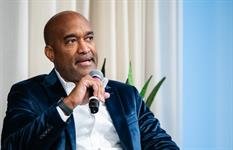
What his next steps should show.
Target’s recent leadership change is more than a retail shake-up. It’s a case study in what happens when a brand loses its way, and why companies must work to rebuild trust when customers start to drift.
The challenges facing incoming CEO Michael Fiddelke require a cultural reset, a solid comms strategy and a return to what made the retailer a favorite in the first place.
“Target has forgotten what (made them stand out) and what their niche was,” said Steven Austin Stovall, associate professor of management at Southeast Missouri State University.
This loss of identity, paired with its public fallout from a DEI rollback and an economic downturn, has created more obstacles and reputational damage.
With a new leader at the helm, Target can still get back on track, Stovall said.
Fiddelke promised stakeholders he wouldn’t wait until February when he officially steps into the role to start making changes. This signals he has a plan in place and is ready to take action.
The incoming CEO has spent over two decades inside Target, working across operations, HR and finance. He has an insider’s knowledge of the store’s core values and culture which could be beneficial to the retailer’s larger communications strategy.
“I think he probably has a 30, 60 or 90 day plan right now,” Stovall said. “He’s putting the team in place, pulling ideas off the shelf that maybe didn’t see the light of day under (outgoing CEO Brian) Cornell.”
If he’s to be successful, he must start by addressing the following key issues.
Brand identity
Brands cannot abandon the core qualities that made customers love them. They must reiterate these values, beginning internally with employees at all levels, Stovall said.
What makes the company unique? What does the company stand for? How can these values be reflected in external messaging and what does that look like? Stay consistent and true to core principles as a guide in times of crisis he said.
Target once thrived because it emphasized affordability and style. But in recent years, the brand shifted focus toward value pricing, losing the spark that made shoppers excited, Stovall said.
“You don’t have to be the cheapest,” he said. “You can just give customers the best value.”
Rebuilding trust with customers
Brand missteps happen, but doubling down often makes them worse.
When brand trust is lost, it’s a slow trickle to win it back, he said. But it can be done with the right approach.
“A genuine communication to (Target’s) customer base of ‘Let us prove to you that we’re a different company now’ would go a long way,” he said.
Once an organization owns its mistakes, it can move forward with a fresh strategy. Transparency beats defensiveness. Consumers will forgive missteps if companies admit fault and show a plan forward, Stovall said.
For Target, and any brand facing an identity crisis, the message is clear: rebuilding trust is about rediscovering what made customers care in the first place, proving you’ve learned from mistakes and consistently showing that you’re serious about change.
“In a turnaround situation like this, I wouldn’t worry about (what other businesses are doing),” Stovall said. “Put blinders on. Focus internally. Fix what Target can fix.”
Courtney Blackann is a communications reporter. Connect with her on LinkedIn or email her at courtneyb@ragan.com.
The post Case study: How Target’s new CEO can rebuild trust appeared first on PR Daily.














